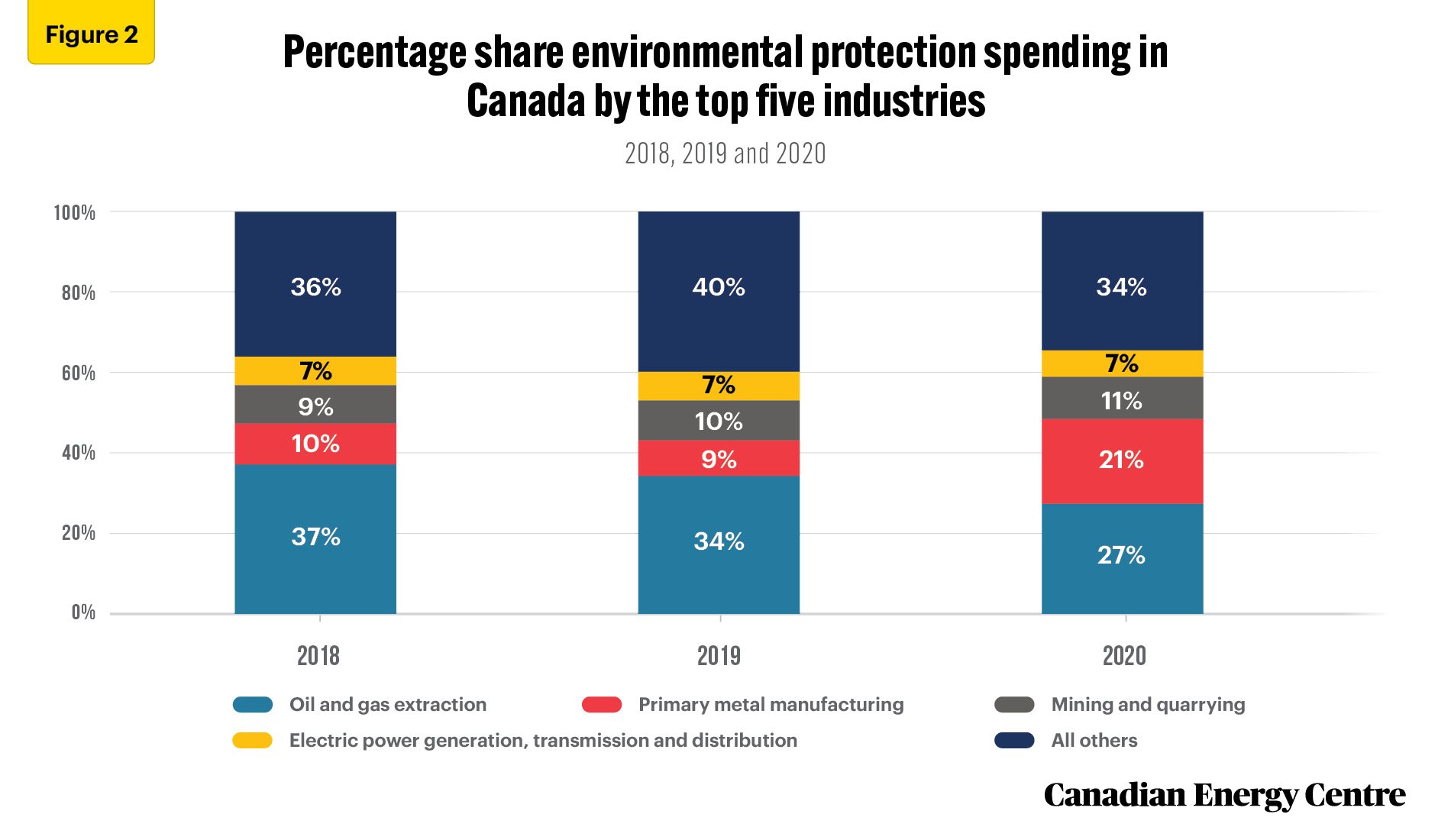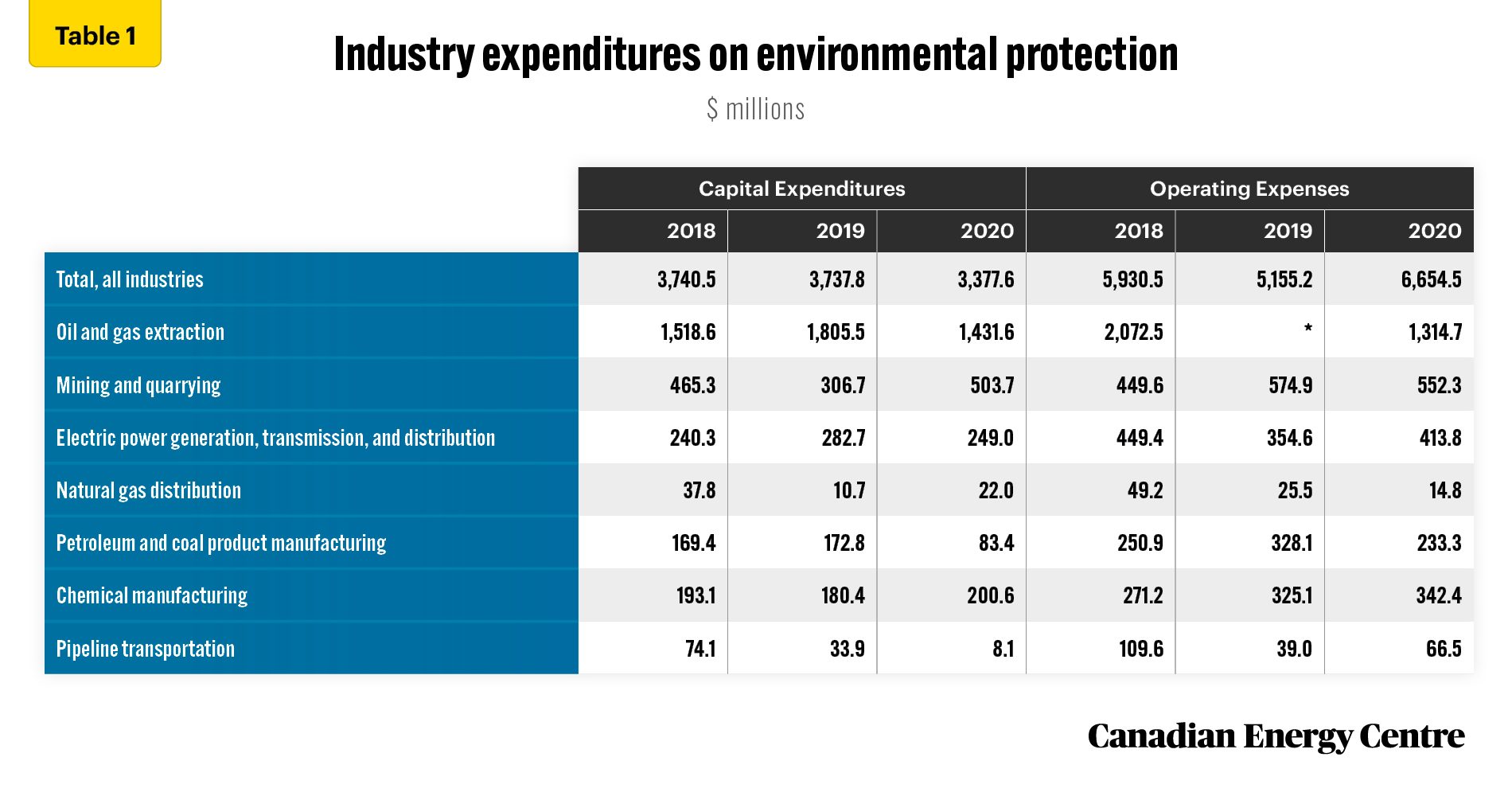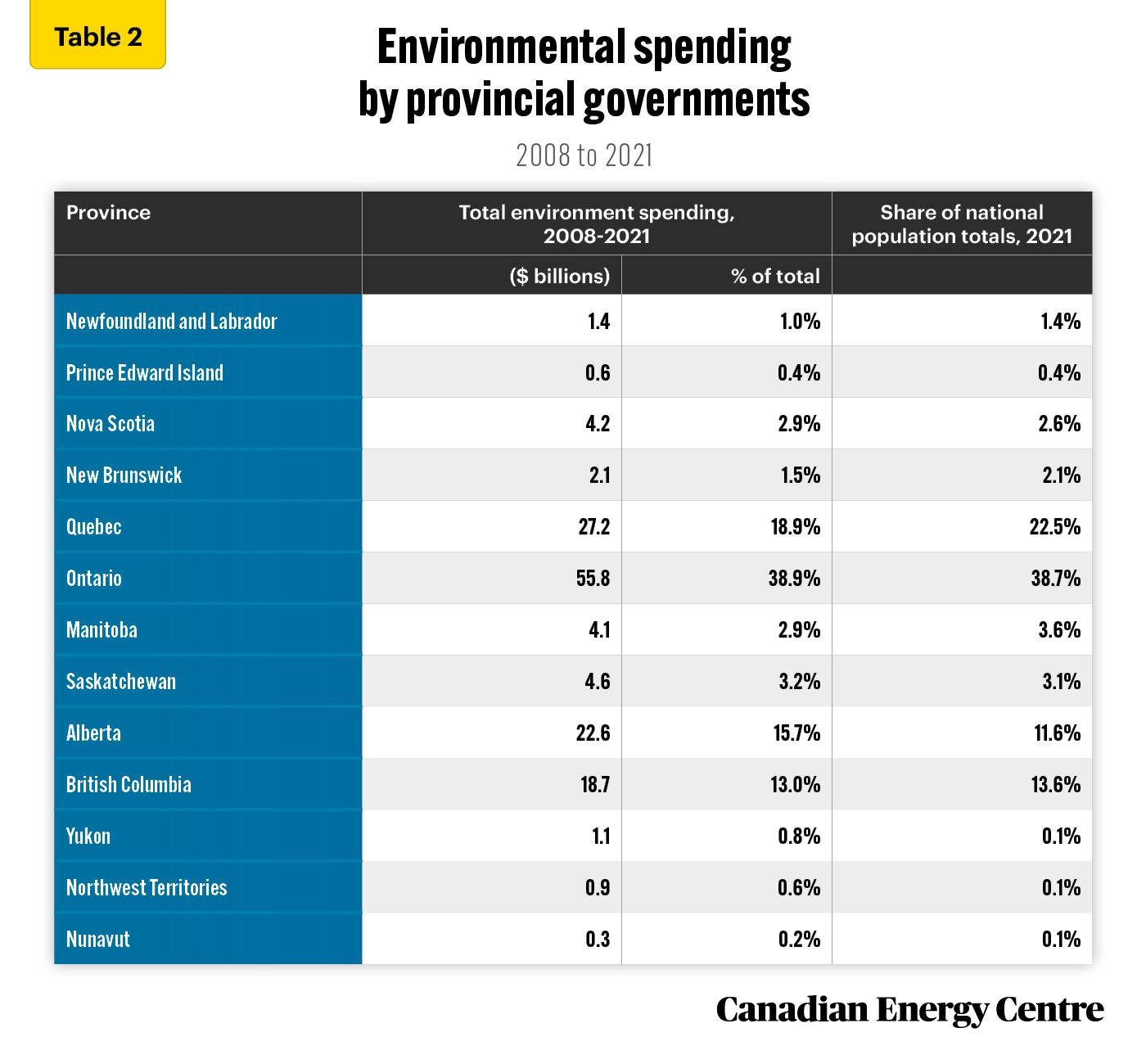To sign up to receive the latest Canadian Energy Centre research to your inbox email: inbox@canadianenergycentre.ca
Download the PDF here
Download the charts here
Overview
This Fact Sheet details spending on environmental protection by the oil and gas sector, other industries, and provincial governments. The comparisons are made using the most recent data from Statistics Canada.
As the data makes clear, Canada’s oil and gas sector spent more than any other industry in Canada on environmental protection—$9.4 billion cumulatively from 2018 to 2020— accounting for 33 per cent of total environmental protection expenditures made by business across Canada in those years.
As the data also shows, the Alberta government spent $22.6 billion on environmental protection between 2008 and 2021.
Environmental protection spending by industry
Figure 1 shows that Canadian businesses spent $28.6 billion on environmental protection between 2018 and 2020. When capital and operating expenses on environmental protection are combined, out of the $28.6 billion spent between 2018 and 2020, the oil and gas sector spent $9.4 billion.

Source: Derived from Statistics Canada, Table 38-10-0130-01
In 2020, when capital and operating expenses on environmental protection are combined, the oil and gas sector spent $2.7 billion, which constituted 27 per cent of all Canadian business spending on the environment that year (see Figure 2).
Other major industries also spent money on environmental protection including primary metal manufacturing ($2.1 billion), mining and quarrying (about $1 billion), electric power generation, transmission, and distribution ($0.6 billion), and paper manufacturing ($0.5 billion), and chemical manufacturing (also $0.5 billion).

Source: Derived from Statistics Canada, Table 38-10-0130-01
Breakdown by capital and operating spending
Capital expenditures¹
In 2018, the oil and gas sector was responsible for 41 per cent ($1.5 billion) of all capital spending on environmental protection. All other industries combined spent 59 per cent ($2.2 billion). In 2019, the oil and gas sector spent $1.8 billion, 48 per cent of the all-industry spending on environmental protection. In 2020, the oil and gas sector spent $1.4 billion, 42 per cent of the all-industry spending on environmental protection (see Table 1).
Operating expenses²
In 2018, the oil and gas sector was responsible for 34 per cent ($2 billion) of all operating expenditures allocated to environmental protection. All other industries combined spent 66 per cent ($3.8 billion) of the operating expenditures directed to environmental protection. For 2019, there was no data available on the oil and gas industry’s operating expenses on environmental protection. In 2020, the oil and gas sector was responsible for 20 per cent ($1.3 billion) of all operating expenditures for environmental protection.
1. Capital expenditure includes outlays on machinery and equipment and for the construction of non-residential facilities, among others. 2. Operating expenses includes expenses incurred for labour, materials and supplies, and maintenance and repair, among others.

Source: Derived from Statistics Canada, Table 38-10-0130-01
Environmental spending by the provinces, 2008-2021
Industries are not alone in spending money on environmental protection; provincial governments do as well. Table 2 shows that total provincial government spending on environmental protection between 2008 and 2021 was nearly $143.5 billion.
Alberta spent $22.6 billion or 15.7 per cent of all provincial expenditures on the environment, while its proportion of the national population was 11.6 per cent in 2021. Ontario spent $55.8 billion or 38 per cent of all provincial expenditures, more or less in line with its 38.7 per cent of the population in 2021. Nova Scotia and Saskatchewan spent a higher proportion on the environment relative to their share of the national population.
Two of the largest provinces spent less on the environment than their share of the national population: Quebec and British Columbia. Quebec’s government spent $27.2 billion or 18.9 per cent of all provincial environmental expenditures between 2008 and 2021, significantly below its 22.5 per cent share of the national population in 2021.

Source: Statistics Canada, Tables 10-10-0005-01 and 17-10-0005-01; and authors’ calculations
Conclusion
Environmental spending highest by oil and gas industry, and highest by Alberta in relation to its population
Between 2018 and 2020, the oil and gas sector spent $9.3 billion, or 33 per cent of the amount spent by all businesses combined on environmental protection.
Data available from 2008 to 2021 show that Alberta’s provincial government spent significantly more than its share of Canada’s population ($22.6 billion or 15.7 per cent of all provincial spending even as its share of the national population was 11.6 per cent).
Notes
This CEC Fact Sheet was compiled by Ven Venkatachalam and Lennie Kaplan at the Canadian Energy Centre: www.canadianenergycentre.ca. The authors and the Canadian Energy Centre would like to thank and acknowledge the assistance of two anonymous reviewers in reviewing the data and research for this Fact Sheet. All percentages in this report are calculated from the original data, which can run to multiple decimal points. They are not calculated using the rounded figures that may appear in charts and in the text, which are more reader friendly. Thus, calculations made from the rounded figures (and not the more precise source data) will differ from the more statistically precise percentages we arrive at using source data.
References (All links live as of October 2, 2023)
Statistics Canada (2023), Table 38-10-0130-01: Capital and operating expenditures on environmental activities by industry <https://bit.ly/3OERIKi>; Statistics Canada (2022), Table 10-10-0005-01: Canadian Classification of Functions of Government <https://bit.ly/2ZEkp2W>.
Creative Commons Copyright
Research and data from the Canadian Energy Centre (CEC) is available for public usage under creative commons copyright terms with attribution to the CEC. Attribution and specific restrictions on usage including non-commercial use only and no changes to material should follow guidelines enunciated by Creative Commons here: Attribution-NonCommercial-NoDerivs CC BY-NC-ND.
